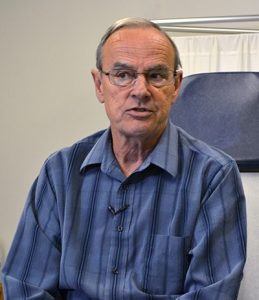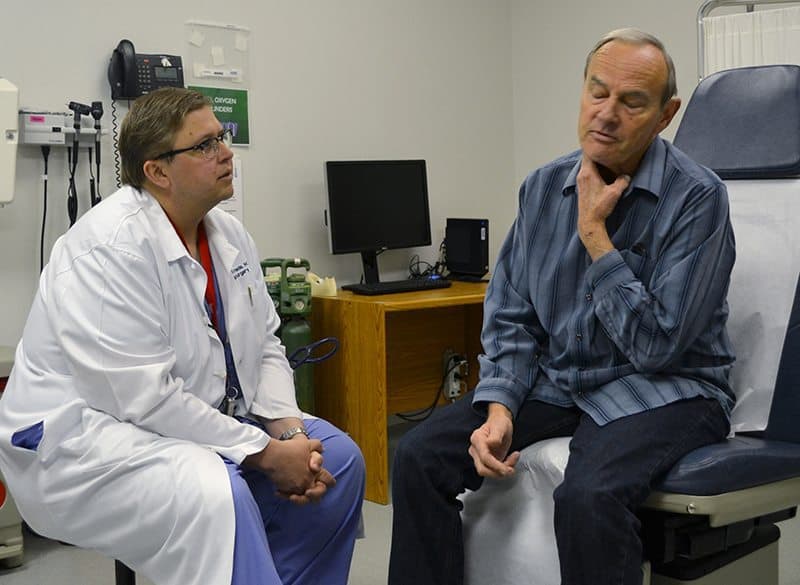Screening Catches Carotid Artery Blockage in Time
| June 16, 2016 | “I was a stroke waiting to happen.”
That is how Robert “Bob” Tunaitis of Maumelle describes his health when he went in last year for a free peripheral artery disease (PAD) screening offered by UAMS.
As part of the screening, medical personnel took blood pressure measurements in Tunaitis’ legs and arms. They also performed an ultrasound on the arteries in his neck — a test that Tunaitis believes saved his life.
The 61-year-old man didn’t have PAD, but he did have carotid artery disease, which resulted in 99 percent blockage in the carotid artery on the right side.
The human body has two carotid arteries, one on each side, that supply blood to the front part of the brain. A blockage in either artery can lead to a stroke, which is the third leading cause of death in the United States.

Robert Tunaitis went to a free screening offered by UAMS and discovered that he had severe blockage in the carotid artery on his right side.
Tunaitis said he didn’t have any indication that anything was wrong.
“I had no symptoms — that is the curious thing about it. If you have blockage and it’s not in your legs or extremities where it causes you muscle pain, then you’re not aware of it,” he said.
“I was a silent time bomb that could go off anytime,” he added.
Last year was the second time that Tunaitis went in for a PAD screening. The first time was about a decade ago. Then, doctors found that Tunaitis needed an aortic femoral bypass to correct blockage there.
The procedure greatly helped his mobility, he said.
Improved mobility is a quite common result after treatment for PAD, said Matthew Smeds, M.D., an assistant professor in the UAMS College of Medicine’s Department of Surgery who specializes in vascular medicine.
PAD mostly occurs in the legs, Smeds said. With the condition, there is blockage in the arteries that provide blood to the legs, which means the muscles don’t get enough blood. People with PAD usually experience pain when they walk or in really severe cases have ulcers on their feet that aren’t healing, he said.
Risk factors for PAD include age, especially over the age of 50, history of heart disease, diabetes, high blood sugar, high cholesterol, high blood pressure, obesity, physical inactivity and smoking. Men are more likely to develop PAD than women are, although postmenopausal women are at risk.
PAD can be a marker of other diseases, including carotid artery disease and heart disease, said Smeds.
Tunaitis said he is grateful that his wife encouraged him to be screened the second time around.
“I feel 20 years younger than I am,” he said with a smile, adding that he needs it to keep up with his family, including a great-granddaughter.
Screening saved his life, he said.
“Without question, I would recommend people get screening,” he said. “I can’t emphasize how important it is to get screening as we get older.”
“If anyone is fearful or apprehensive about being screened, don’t be,” he added. “It is easy, painless, noninvasive, and you’re surrounded by people at UAMS who really care about your well-being.”
